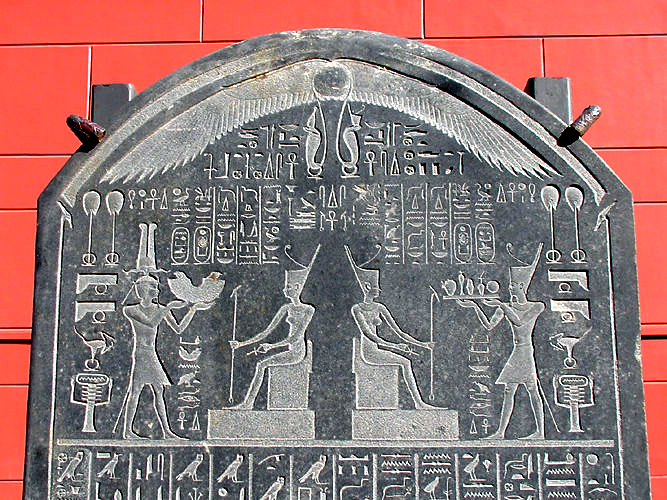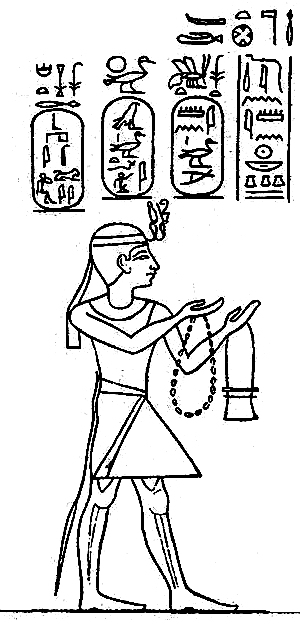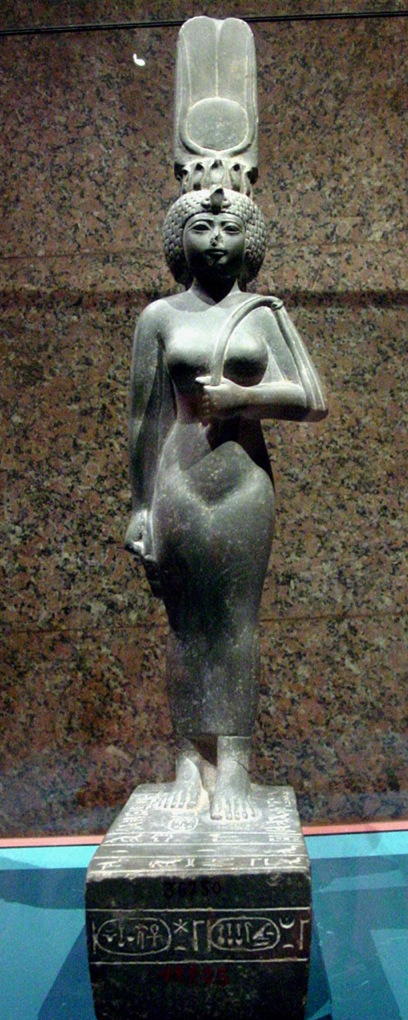|
Candace
Kandake, kadake or kentake ( Meroitic: 𐦲𐦷𐦲𐦡 ''kdke''),Kirsty Rowan"Revising the Sound Value of Meroitic D: A Phonological Approach,"''Beitrage zur Sudanforschung'' 10 (2009). often Latinised as Candace ( grc, Κανδάκη, ''Kandakē''), was the Meroitic term for the sister of the king of Kush who, due to the matrilineal succession, would bear the next heir, making her a queen mother. She had her own court, probably acted as a landholder and held a prominent secular role as regent. Contemporary Greek and Roman sources treated it, incorrectly, as a name. The name Candace is derived from the way the word is used in the New Testament (). Archaeological sources The Kandakes of Meroe were first described through the Greek geographer's Strabo account of the "one-eyed Candace" in 23 BCE in his encyclopedia Geographica. '' ''There are at least ten regnant Meroitic queens during the 500 years between 260 BCE and 320 CE, and at least six during the 140 periods between 60 ... [...More Info...] [...Related Items...] OR: [Wikipedia] [Google] [Baidu] |
Candace (given Name)
Candace is a royal title from the Bible, ultimately deriving from the term ''kandake'', a title for a queen or queen mother in the ancient African Kingdom of Kush; also meaning pure and innocent. In the United States, it was a popular name during the late 1970s, throughout the 1980s, and into the early 1990s. Candace may refer to: * Candace Allen (author) (b. 1950) (21st century), a Hollywood screenwriter * Candace Allen (beauty queen) (21st century), a Miss District of Columbia USA 2006 * Candace Bailey (born 1982), an American actress * Candace Cameron Bure (born 1976), an American actress * Candace Bushnell (born 1958), an American writer * Candace Camp (born 1949), a best-selling American writer * Candace Charles (born 1990), a Miss Guyana 2007 * Candace Collins (born 1957), an American model and actress * Candace Gingrich (born 1966), a LGBT rights activist * Candace Glendenning (born 1953), an English actress * Candace Glickman (21st century), a Miss New Hampshire 2003 * ... [...More Info...] [...Related Items...] OR: [Wikipedia] [Google] [Baidu] |
Ethiopian Eunuch
The Ethiopian eunuch ( gez, ኢትዮጵያዊው ጃንደረባ) is a figure in the New Testament of the Bible; the story of his conversion to Christianity is recounted in Acts 8. Biblical narrative Philip the Evangelist was told by an angel to go to the road from Jerusalem to Gaza, and there he encountered the Ethiopian eunuch, the treasurer of the Candace, Queen of the Ethiopians (Ancient Greek: Κανδάκη, the "Candace" was the Meroitic language term for "queen" or possibly "royal woman"). The eunuch had been to Jerusalem to worship and was returning home. Sitting in his chariot, he was reading the Book of Isaiah, specifically . Philip asked the Ethiopian, "Do you understand what you are reading?" He said he did not ("How can I understand unless I have a teacher to teach me?"), and asked Philip to explain the text to him. Philip told him the Gospel of Jesus, and the Ethiopian asked to be baptized. They went down into a water source, traditionally thought to be the ' ... [...More Info...] [...Related Items...] OR: [Wikipedia] [Google] [Baidu] |
Meroë
Meroë (; also spelled ''Meroe''; Meroitic: or ; ar, مرواه, translit=Meruwah and ar, مروي, translit=Meruwi, label=none; grc, Μερόη, translit=Meróē) was an ancient city on the east bank of the Nile about 6 km north-east of the Kabushiya station near Shendi, Sudan, approximately 200 km north-east of Khartoum. Near the site is a group of villages called Bagrawiyah ( ar, البجراوية). This city was the capital of the Kingdom of Kush for several centuries from around 590 BC, until its collapse in the sixth century AD. The Kushitic Kingdom of Meroë gave its name to the "Island of Meroë", which was the modern region of Butana, a region bounded by the Nile (from the Atbarah River to Khartoum), the Atbarah and the Blue Nile. The city of Meroë was on the edge of Butana. There were two other Meroitic cities in Butana: Musawwarat es-Sufra and Naqa. The first of these sites was given the name Meroë by the Persian king, Cambyses, in honor of his sis ... [...More Info...] [...Related Items...] OR: [Wikipedia] [Google] [Baidu] |
Kingdom Of Kush
The Kingdom of Kush (; Egyptian language, Egyptian: 𓎡𓄿𓈙𓈉 ''kꜣš'', Akkadian language, Assyrian: ''Kûsi'', in LXX grc, Κυς and Κυσι ; cop, ''Ecōš''; he, כּוּשׁ ''Kūš'') was an ancient kingdom in Nubia, centered along the Nile Valley in what is now northern Sudan and southern Egypt. The region of Nubia was an early cradle of civilization, producing several complex societies that engaged in trade and industry. The city-state of Kerma emerged as the dominant political force between 2450 and 1450 BC, controlling the Nile Valley between the first and fourth Cataracts of the Nile, cataracts, an area as large as Egypt. The Egyptians were the first to identify Kerma as "Kush" and over the next several centuries the two civilizations engaged in intermittent warfare, trade, and cultural exchange. Much of Nubia came under Egyptian rule during the New Kingdom of Egypt, New Kingdom period (1550–1070 BC). Following Egypt's disintegration amid the Lat ... [...More Info...] [...Related Items...] OR: [Wikipedia] [Google] [Baidu] |
List Of Legendary Monarchs Of Ethiopia
This is a list of legendary monarchs of Ethiopia, based on a king list provided by Ethiopian prince regent Tafari Makonnen (later known as Emperor Haile Selassie), with reference to multiple Ethiopian traditions and legends. Other Ethiopian king lists are discussed in the Other King Lists section. Over Ethiopia's long history, multiple kingdoms and states have ruled, with one of the earliest known being Dʿmt from the 10th century BC. The last royal dynasty of Ethiopia was the Solomonic dynasty, who ruled until 1975 when the monarchy was abolished. Numerous king lists are in existence which chronicle the lineage of kings before the Solomonic dynasty, but often with noticeable disagreements between them. An official chronicle of the kings of Ethiopia from the royal family was published in Charles Fernand Rey's book ''In the Country of the Blue Nile'' in 1927, and is the longest Ethiopian king list published in the Western world. However, there is considerable debate on the historici ... [...More Info...] [...Related Items...] OR: [Wikipedia] [Google] [Baidu] |
Meroitic Language
The Meroitic language () was spoken in Meroë (in present-day Sudan) during the Meroitic period (attested from 300 BCE) and became extinct about 400 CE. It was written in two forms of the Meroitic alphabet: Meroitic Cursive, which was written with a stylus and was used for general record-keeping; and Meroitic Hieroglyphic, which was carved in stone or used for royal or religious documents. It is poorly understood, owing to the scarcity of bilingual texts. Name Meroitic is an extinct language also referred to in some publications as Kushite after the apparent attested endoethnonym Meroitic ''qes'', ''qos'' (transcribed in Egyptian as ''kꜣš''). The name ''Meroitic'' in English dates to 1852 where it occurs as a translation of German . The term derives from Latin , corresponding to Greek . These latter names are representations of the name of the royal city of Meroë of the Kingdom of Kush. In Meroitic, this city is referred to as ''bedewe'' (or sometimes ''bedewi''), which is r ... [...More Info...] [...Related Items...] OR: [Wikipedia] [Google] [Baidu] |
Stele
A stele ( ),Anglicized plural steles ( ); Greek plural stelai ( ), from Greek , ''stēlē''. The Greek plural is written , ''stēlai'', but this is only rarely encountered in English. or occasionally stela (plural ''stelas'' or ''stelæ''), when derived from Latin, is a stone or wooden slab, generally taller than it is wide, erected in the ancient world as a monument. The surface of the stele often has text, ornamentation, or both. These may be inscribed, carved in relief, or painted. Stelae were created for many reasons. Grave stelae were used for funerary or commemorative purposes. Stelae as slabs of stone would also be used as ancient Greek and Roman government notices or as boundary markers to mark borders or property lines. Stelae were occasionally erected as memorials to battles. For example, along with other memorials, there are more than half-a-dozen steles erected on the battlefield of Waterloo at the locations of notable actions by participants in battle. A traditio ... [...More Info...] [...Related Items...] OR: [Wikipedia] [Google] [Baidu] |
Lunette (stele)
The lunette spatial region in the upper portion of stelas, became common for stelas as a prelude to a stele's topic. Its major use was from ancient Egypt in all the various categories of stelas: funerary, Victory stelas, autobiographical, temple, votive, etc. The lunettes are most common from ancient Egyptian stelas, as not only is the topic of the stele presented, but honorific gods, presenters, individuals, etc. are previewed, and often with Egyptian hieroglyphic statements. The main body of the stele is then presented below, often separated with a horizontal line (register), but not always. In Egyptian stelas, many have horizontal lines of hieroglyphs; often the lunette will contain shorter vertical statements in hieroglyphs, sometimes just names of the individuals portrayed, hieroglyphs in front, or behind the individual. 19th Dynasty Egypt, post Amarna From the post-Amarna period onwards, many personal stelas made exhortations to the ancient Egyptian deities; stelas to sp ... [...More Info...] [...Related Items...] OR: [Wikipedia] [Google] [Baidu] |
Harsiotef
Harsiotef was a Kushite King of Meroe (about 404 – 369 BC). Harsiotef took on a full set of titles based on those of the Egyptian Pharaohs: ''Horus name:'' Kanakht Khaemnepet ("Mighty Bull appears in Napata") ''Nebty Name:'' Nednetjeru ("Who seeks the council of Gods") ''Golden Horus Name:'' Uftikhesutnebut ("Subduer given all the Desert Lands") ''Prenomen:'' Sameryamun ("Beloved son of Amun") ''Nomen:'' Harsiotef ("Horus Son of his Father") Harsiotef was the son of Queen Atasamale and likely of King Amanineteyerike. He had a wife named Queen Batahaliye and may have had another wife named Queen Pelkha. If Queen Pelkha was his wife, he would also be the father of King Nastasen. It is possible that King Akhraten was also a son of Harsiotef, and Queen Sakhmakh, the wife of Nastasen, may be his daughter. He left an inscription dated to his thirty-third regnal year, listing the battles from his successful campaign east of his kingdom against a town called ''Habasa'', whose ... [...More Info...] [...Related Items...] OR: [Wikipedia] [Google] [Baidu] |
Nastasen
Nastasen was a king of Kush (335 – 315/310 BC). According to a stela from Dongola his mother was named Queen Pelkha and his father may have been King Harsiotef. His successor was Aryamani. He is known from three types of objects. There is a stela with a long historical inscription, a silver handle of a mirror and several ''shabti''-figures. The mirror handle and the ''shabti'' were found in a pyramid at Nuri (Nu. 15), which was obviously his burial place. He was the last Kushite king to be buried in the royal cemetery at Napata. The 1.63 m high granite stela was found at New Dongola and is now in the Berlin Museum Inv. no. 2268. Originally it was most likely placed in the Amun temple of Jebel Barkal. In the upper part appear the pictures and name of his mother, Pelkha and his wife, Sekhmakh, next to the king. The tomb of Nastasen is among several in Nuri that are slated for excavation by archaeologists using underwater archaeological methods. That is necessary because of ... [...More Info...] [...Related Items...] OR: [Wikipedia] [Google] [Baidu] |
God's Wife Of Amun
God's Wife of Amun (Egyptian: ''ḥm.t nṯr n ỉmn'') was the highest-ranking priestess of the Amun cult, an important religious institution in ancient Egypt. The cult was centered in Thebes in Upper Egypt during the Twenty-fifth and Twenty-sixth dynasties (circa 740–525 BC). The office had political importance as well as religious, since the two were closely related in ancient Egypt. Although the title is first attested in the Middle Kingdom, its full political potential was not realized until the advent of the Eighteenth Dynasty. History of the office nTr-N41:X1 The shorter version of the title, God's Wife, is in use by the time of the Twelfth Dynasty, when the title is attested for the non-royal women Iy-meret-nebes and Neferu.Mariam F. Ayad (2009), ''God’s Wife, God’s Servant''. As early as the First Intermediate Period, there is mention of A "Wife of the God" in reference to the god Min. The full title of God's Wife of Amun is only used during and after the ... [...More Info...] [...Related Items...] OR: [Wikipedia] [Google] [Baidu] |




.jpg)





